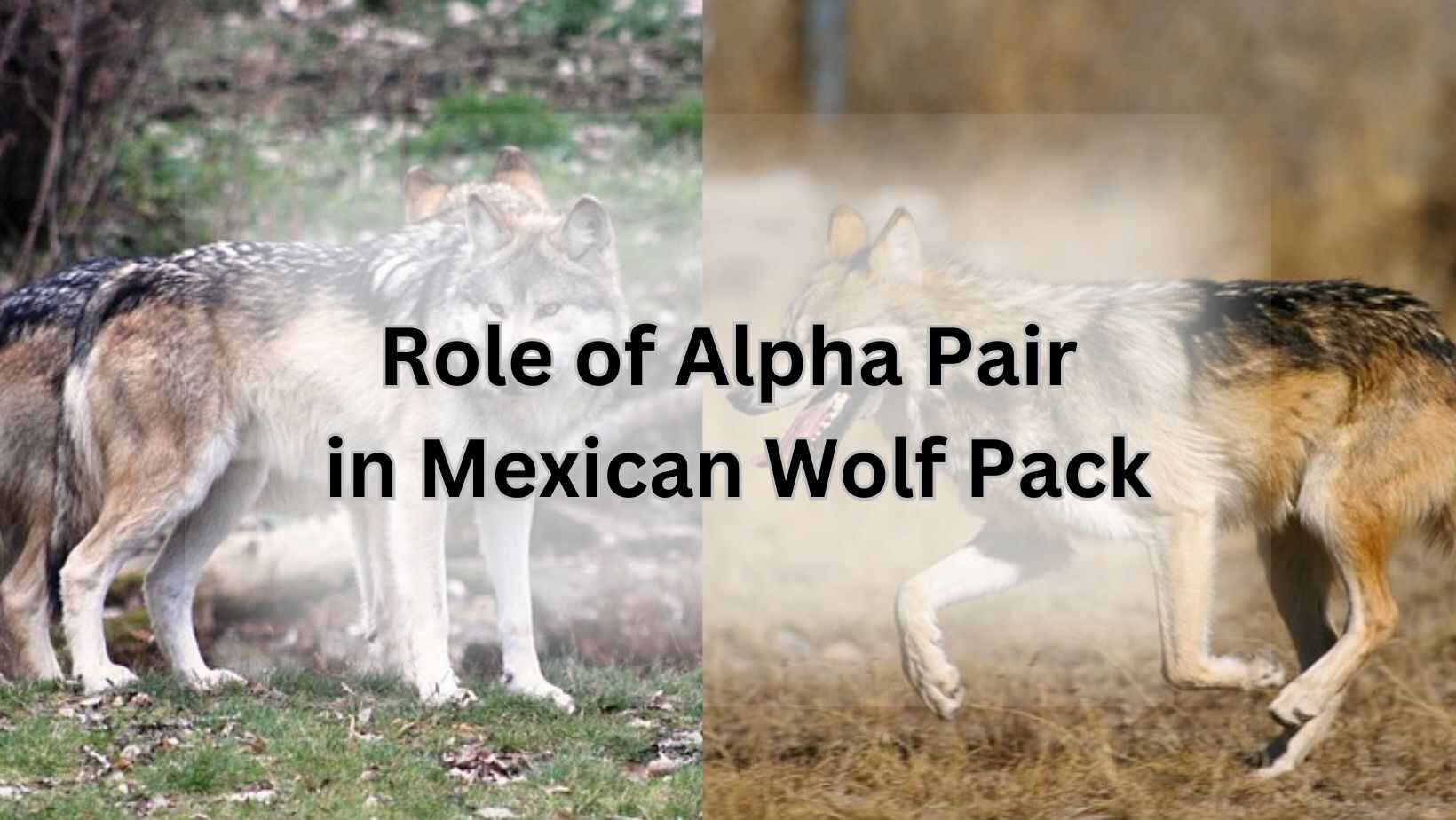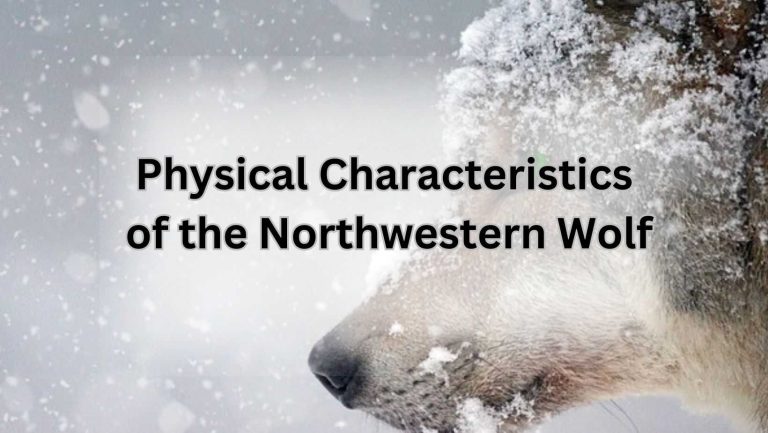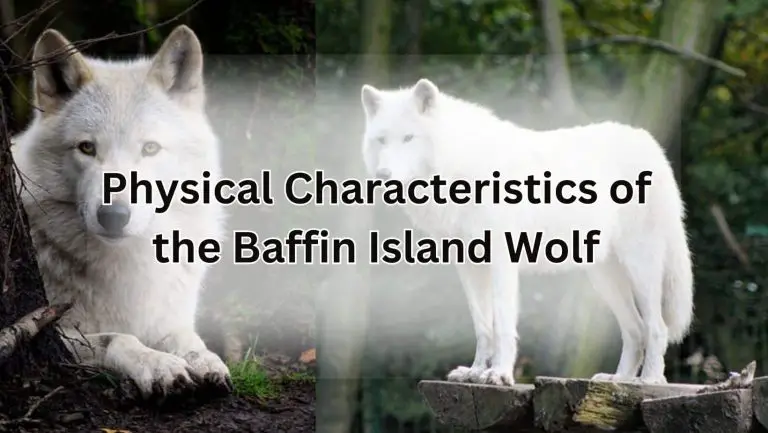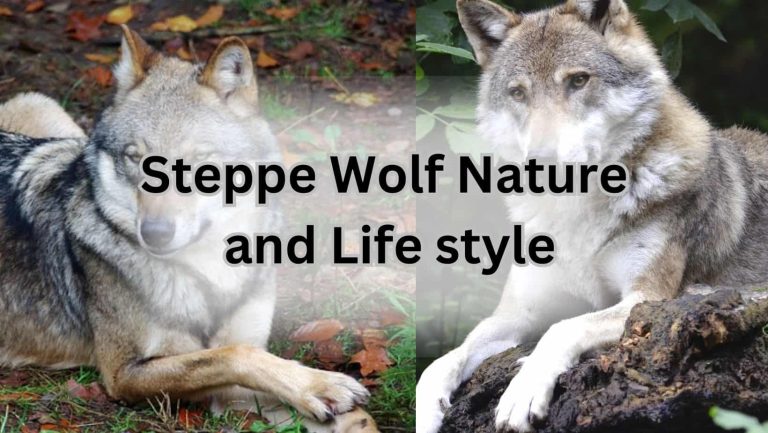Mexican Wolf: Unleashing the Wild Side of Canid Conservation

Introduction
The Mexican wolf, also known as Canis lupus baileyi, is a fascinating and endangered species that roams the wild landscapes of North America. As a Canid Wildlife Lover with 20 years of experience, I have witnessed the beauty and importance of these majestic creatures firsthand. Let’s dive into the world of the Mexican wolf and explore why they are worth protecting.
Overview of the Mexican Wolf
The Mexican wolf is a subspecies of the gray wolf, known for its stunning coat of gray, black, and tan fur. These wolves are highly social animals, living in packs that work together to hunt and care for their young. With their piercing yellow eyes and pointed ears, Mexican wolves are truly a sight to behold in the wild.
History of Mexican Wolf Conservation Efforts
Over the years, the Mexican wolf population has faced numerous challenges, including habitat loss and hunting. Conservation efforts have been put in place to protect these wolves from extinction, with organizations working tirelessly to ensure their survival in the wild. It’s a heartwarming tale of resilience and dedication to preserving a vital part of our ecosystem.
Importance of Protecting the Mexican Wolf
Protecting the Mexican wolf is crucial for maintaining a healthy balance in the ecosystem. As top predators, these wolves play a vital role in controlling the populations of prey species, which in turn affects the entire food chain. By safeguarding the Mexican wolf, we are not only preserving a beautiful species but also ensuring the health of our environment for generations to come.
Physical Characteristics
Have you ever wondered about the unique physical characteristics of the Mexican wolf? Let’s dive into the fascinating world of these beautiful creatures!
Size and Weight of Mexican Wolves
The Mexican wolf, also known as Canis lupus baileyi, is a subspecies of the gray wolf and is slightly smaller than its northern relatives. These majestic creatures can weigh anywhere from 50 to 80 pounds, with males typically being larger than females. Despite their size, Mexican wolves are known for their agility and speed, making them skilled hunters in the wild.
Unique Features of Mexican Wolf Fur
One of the most striking features of the Mexican wolf is its beautiful fur coat. These wolves have a thick, luxurious coat that comes in a range of colors from gray to reddish-brown. Their fur helps them blend in with their surroundings, making them excellent hunters and allowing them to evade predators.
Adaptations for Survival in the Wild
Living in the harsh desert environments of the southwestern United States and northern Mexico, Mexican wolves have developed unique adaptations to survive. Their large paws help them navigate rocky terrain, while their keen senses of smell and hearing make them formidable hunters. These wolves are also known for their strong social bonds, living in packs to increase their chances of survival.
So, the next time you catch a glimpse of a Mexican wolf, take a moment to appreciate their incredible physical characteristics and the adaptations that have allowed them to thrive in the wild!
3. Habitat and Range
When it comes to the Mexican wolf, understanding its habitat and range is crucial for ensuring its survival in the wild. Let’s dive into the natural habitat, geographic range, and threats facing these majestic creatures.
3.1 Natural Habitat of Mexican Wolves
The Mexican wolf, also known as Canis lupus baileyi, calls the rugged terrains of the southwestern United States and northern Mexico its home. These wolves prefer a mix of forested areas, grasslands, and mountainous regions where they can roam freely and hunt for their prey. With their keen senses and sharp hunting skills, Mexican wolves are well-adapted to thrive in this diverse habitat.
3.2 Geographic Range of Mexican Wolf Population
The geographic range of Mexican wolf population extends across states like Arizona, New Mexico, and Texas in the U.S., as well as parts of Mexico. While they once roamed freely across these regions, human encroachment and habitat destruction have significantly reduced their range. Efforts are underway to reintroduce Mexican wolves into the wild and expand their population to ensure their long-term survival.
3.3 Threats to Mexican Wolf Habitat
Despite conservation efforts, Mexican wolves face numerous threats to their habitat and survival. Human activities such as deforestation, urbanization, and livestock grazing encroach on their natural habitat, leading to conflicts between wolves and humans. Additionally, illegal poaching and hunting pose a significant threat to Mexican wolf populations, putting them at risk of extinction.
4. Diet and Hunting Behavior
When it comes to Mexican wolves, their diet and hunting behavior are fascinating aspects of their lives. Let’s dive into the world of these majestic creatures and explore what they eat and how they hunt.
4.1 Primary Prey of Mexican Wolves
The primary prey of Mexican wolves consists of a variety of animals, with deer being a favorite on the menu. These wolves also target elk, rabbits, and smaller mammals like squirrels and rodents. They are opportunistic hunters, adapting their diet based on the availability of prey in their habitat.
4.2 Hunting Strategies of Mexican Wolves
Mexican wolves are skilled hunters, employing a range of strategies to catch their prey. They often hunt in packs, using teamwork to take down larger animals like deer and elk. These wolves are known for their patience and stealth, stalking their prey before launching a coordinated attack.
4.3 Impact of Diet on Mexican Wolf Population
The diet of Mexican wolves plays a crucial role in their population dynamics. Changes in prey availability can have a significant impact on the wolf population, affecting their survival and reproduction rates. Conservation efforts often focus on ensuring a stable food supply for these wolves to support their population growth.
So, the next time you think about Mexican wolves, remember that their diet and hunting behavior are essential aspects of their existence. From deer to rabbits, these wolves have a diverse menu that keeps them thriving in the wild. Their hunting strategies are a testament to their intelligence and adaptability, showcasing the remarkable abilities of these magnificent creatures.
Reproduction and Family Structure of Mexican Wolves
When it comes to the reproduction and family structure of Mexican wolves, these fascinating canids have some interesting habits and dynamics that make them stand out in the wild. Let’s dive into the world of Mexican wolf mating, gestation, and pack hierarchy!
Mating Habits of Mexican Wolves
Mexican wolves are known for their monogamous mating habits, forming strong bonds with their partners. Courtship rituals involve howling, nuzzling, and playful behavior to strengthen the pair’s bond. Once a pair forms, they stay together for life, raising their offspring as a team.
Gestation Period and Birth of Pups
After successful mating, the female Mexican wolf undergoes a gestation period of around 63 days before giving birth to a litter of pups. The alpha female typically gives birth to 4-6 pups in a den, where they are cared for by both parents and older siblings in the pack.
Role of Alpha Pair in Mexican Wolf Pack
The alpha pair in a Mexican wolf pack plays a crucial role in maintaining order and leading the pack. They are responsible for making decisions regarding hunting, territory defense, and raising the pups. The rest of the pack members respect and follow the lead of the alpha pair, creating a harmonious family structure within the pack.
Conservation Status
As a Canid Wild Life Lover, you must be aware of the endangered status of the Mexican wolf. These beautiful creatures, also known as Canis lupus baileyi, are struggling to survive in the wild due to various threats to their population.
Endangered Status of Mexican Wolves
The Mexican wolf, a subspecies of the gray wolf, is currently listed as endangered. Their population has drastically declined over the years, primarily due to habitat loss, human persecution, and disease. Conservation efforts are crucial to ensure the survival of these magnificent animals.
Efforts to Reintroduce Mexican Wolves into the Wild
To combat the declining population of Mexican wolves, conservationists have been working tirelessly to reintroduce them into the wild. These efforts involve carefully selecting wolves for release, monitoring their progress, and addressing any challenges they may face in their new environment.
Challenges Facing Mexican Wolf Conservation
Despite the ongoing conservation efforts, there are several challenges facing Mexican wolf conservation. One of the main obstacles is human-wolf conflict, as ranchers often view wolves as a threat to their livestock. Finding a balance between protecting wolves and addressing the concerns of local communities is essential for successful conservation.
Another challenge is the limited genetic diversity within the Mexican wolf population. Inbreeding can lead to health issues and reduced reproductive success, making it crucial to carefully manage breeding programs to maintain genetic variability.
In conclusion, the conservation status of Mexican wolves is a critical issue that requires ongoing efforts to ensure their survival in the wild. By addressing the challenges they face and implementing effective conservation strategies, we can help protect these magnificent animals for future generations to enjoy.
Human Interaction
Conflicts Between Mexican Wolves and Livestock
Let’s address the elephant in the room, or should I say, the wolf in the pasture? Mexican wolves have often been at odds with livestock owners, leading to conflicts over predation. These magnificent creatures sometimes see cows and sheep as a tasty snack, which doesn’t sit well with farmers. It’s like a real-life version of the age-old feud between wolves and sheep, but with a modern twist.
Legal Protection for Mexican Wolves
Thankfully, the Mexican wolf is not left to fend for itself in this dog-eat-dog world. Legal protections have been put in place to ensure the survival of this endangered species. It’s like having a bodyguard for the wolves, making sure they can roam freely without fear of harm. Who knew wolves had their own security detail?
Education and Outreach Programs for Mexican Wolf Conservation
Education is key when it comes to conservation efforts for the Mexican wolf. Outreach programs aim to raise awareness about these majestic creatures and the importance of their survival. It’s like giving wolves their own PR team to spread the word about how awesome they are. Who wouldn’t want to join the fan club of these furry ambassadors of the wild?
Cultural Significance
When it comes to the Mexican wolf, there is more than meets the eye. Let’s dive into the cultural significance of these majestic creatures and explore their role in indigenous cultures, symbolism in art and literature, as well as how conservation efforts are shaped by cultural perspectives.
Role of Mexican Wolves in Indigenous Cultures
For centuries, Mexican wolves have held a special place in the hearts of indigenous communities. These wolves are revered for their strength, resilience, and connection to the natural world. In many indigenous cultures, the Mexican wolf is seen as a symbol of protection, guidance, and unity with nature. Stories and legends often depict the Mexican wolf as a wise and powerful spirit animal, embodying the values of courage and loyalty.
Symbolism of Mexican Wolves in Art and Literature
The Mexican wolf’s powerful presence extends beyond the physical realm and into the world of art and literature. Artists and writers have long been inspired by the beauty and mystery of these wolves, incorporating them into their work as symbols of freedom, wildness, and the untamed spirit of the wilderness. From paintings to poems, the Mexican wolf continues to captivate audiences with its enigmatic allure.
Conservation Efforts Informed by Cultural Perspectives
Conservation efforts for the Mexican wolf are not just about protecting a species; they are also about honoring a cultural legacy. Indigenous knowledge and traditions play a crucial role in shaping conservation strategies, as they offer unique insights into the relationship between humans and wolves. By incorporating cultural perspectives into conservation initiatives, we can ensure that the Mexican wolf continues to roam the wild landscapes of Mexico for generations to come.
9. Research and Monitoring
9.1 Tracking and Studying Mexican Wolf Populations
Have you ever wondered how researchers keep tabs on the elusive Mexican wolf populations? Well, they don’t just shout “Marco” and hope for a “Polo” response. Tracking these magnificent creatures involves a combination of high-tech GPS collars, camera traps, and good old-fashioned detective work. By monitoring their movements and behaviors, scientists can gather valuable data to help protect and conserve these endangered species.
9.2 Advances in Technology for Mexican Wolf Research
Forget about howling at the moon – researchers are howling with excitement over the latest technological advancements in Mexican wolf research. From drones that can survey vast areas of wolf habitat to DNA analysis techniques that can identify individual wolves, technology is revolutionizing the way we study these majestic animals. Who knows, maybe one day we’ll even have wolf selfies on Instagram!
9.3 Collaborative Efforts in Mexican Wolf Monitoring
When it comes to monitoring Mexican wolf populations, teamwork makes the dream work. Conservationists, biologists, government agencies, and local communities all come together in a collaborative effort to ensure the survival of these endangered species. By sharing resources, knowledge, and expertise, these dedicated individuals are working tirelessly to protect the Mexican wolf and its habitat for future generations to enjoy.
Future Outlook
Potential Solutions for Mexican Wolf Conservation
As a devoted Canid Wild Life Lover, I am thrilled to discuss the potential solutions for Mexican Wolf conservation. With the population of these majestic creatures dwindling, it is crucial to implement strategies that will ensure their survival in the wild. From habitat protection to anti-poaching measures, there are various ways we can work towards preserving the Mexican Wolf population.
Long-term Goals for Mexican Wolf Recovery
When it comes to the long-term goals for Mexican Wolf recovery, the focus should be on increasing their numbers and expanding their range. By reintroducing wolves into suitable habitats and monitoring their progress, we can gradually see a rise in their population. It’s a challenging task, but with dedication and perseverance, we can make a significant impact on the future of these beautiful animals.
Importance of Continued Support for Mexican Wolf Protection
Continued support for Mexican Wolf protection is vital to ensure their survival in the wild. From raising awareness about their plight to advocating for stronger conservation policies, every effort counts. As a Canid Wild Life Lover, I urge everyone to join hands in protecting these magnificent creatures for generations to come.






